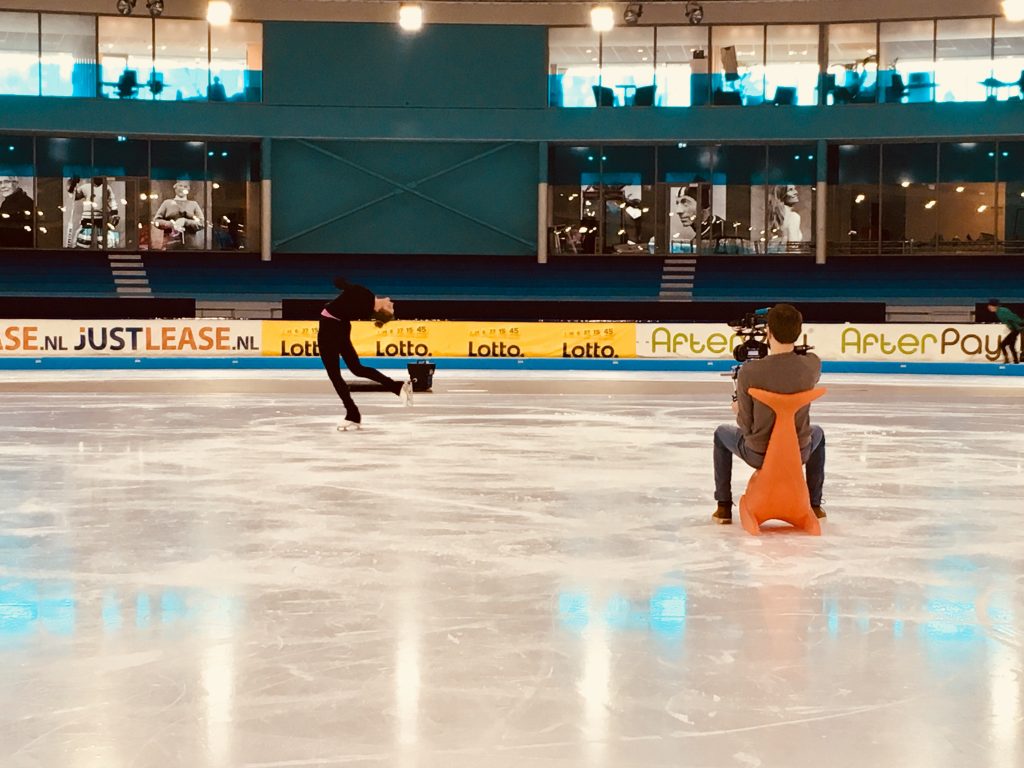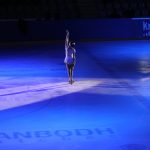

Entertainment on Ice explains what figure skating is to NOS
This is how watching figure skating becomes even more fun, we explain. A kind of ‘figure skating for dummies’
“In the Netherlands, many people think that long track speed skating is the primary skating sport. But if you go abroad, you see that figure skating is much more popular,” said Madelène van Beuzekom, founder of Entertainment on Ice.
For her, terms like a short freestyle, a triple axel, a loop, rittberger jumps and a sky pirouette are cut-and-dried. But many Dutch people have no idea what this is about. We explain, a sort of “figure skating for dummies.
Figure skating, Van Beuzekom explains, consists of four basic elements: jumps, pirouettes, steps and interpretation to music. These basic elements are used to create a series, which is also called a freestyle. During the Winter Olympics, competitors compete in a short (2 minute 50) or free freestyle (average 4 minutes).
In the short freestyle, skaters must show mandatory elements. In the longer free freestyle, the skaters have more freedom. They must show as many as three pirouettes and six or seven jumps, including three combination jumps and a passing series.
Actually comparable to a coloring page, says Van Beuzekom. “First you work out the obligatory elements, the lines, and then you color the lines in the choreography to match the chosen music.”
The Jump
A figure skater can choose from six jumps for the freestyle: an axel, salchow, spot, flip, rittberger and a lutz. The number of rotations made around its own axis is most interesting, Van Beuzekom says. “You really have to pay attention to that at the Games. The bulk rotate three times around the axis (triple), but these Games the top skaters are even showing four rotations at different jumps, that was unimaginable in the past.”
You are constantly making the trade-off: do I take a risk or not? A wobble or fall will quickly cost you points. Sterre van der Gouw
Each element of the freestyle has a set number of points that can be awarded. “So you can actually calculate in advance how many points you will get,” says Sterre van der Gouw, one of the skaters from Entertainment on Ice. You also get minus points or plus points from the judges.
“A freestyle is a mathematical formula,” the skaters explained. “First you calculate the basic points. Then you start looking at your strengths, where you can get extra points. And the risks, where you can get minus points. You constantly weigh up: do I take a risk or not? A wobble or fall will quickly cost you points.”
That is why, as a skater, you are constantly thinking during the freestyle. “You have that formula in your head, and if something goes wrong, you know you can compensate for those points somewhere else. Then you can do a nicer combination jump, for example, or extend your pirouette, so those extra points can get you back to that preconceived plan.”
That’s tricky, though. “You go off autopilot then and some skaters start doing crazy things,” Van der Gouw laughs.
The pirouette
The next element: the pirouette. A pirouette should consist of a minimum number of rotations, turns, anyway. Furthermore, the skater can choose which pirouette to do, for example, upright, deep with the center of gravity near the ice or a gliding pirouette. The judges also pay attention to the start of the pirouette: is it forward or backward, does the skater jump into the pirouette?
The pirouette does not involve “spotting,” as dancers do (looking at a fixed point while your body rotates). “No, haha! You can’t do that in figure skating; you go way too fast for that. Figure skaters turn off their field of vision during pirouettes or close their eyes. Everything goes black. Spotting only slows down,” says Van Beuzekom.
Dance is inseparable from figure skating. Both are moving to music, only the dynamics are different. Madelène van Beuzekom
But dance is often used as a starting point. “Dance is inseparable from figure skating. They are both moving to music, only the dynamics are different. For example, in figure skating you have more speed so keeping balance is much easier.” Van der Gouw also spent years in ballet. “I even had a skate ballet teacher.”
The pass series
The third element is the pass series. These are all freely chosen steps: forward turn, backward turn, movements with the arms, bent through the knees, you name it. “There are countless combinations possible here,” Van Beuzekom said. “You can very much give into a pass series. If something went wrong during the jumps, for example, you can try to make up for it here by raising the artistic value.”
The absolute best is you if you are a master of technology and entertainment. Madelène van Beuzekom
The final element is the interpretation of the music. And that’s important, the skaters say. “That’s how you tell the story. It’s a piece of entertainment. If you choose dramatic music, then you have to tell your freestyle in a dramatic way. If you choose upbeat, then it has to be an upbeat choreography. The music should show the skater’s personality. “And that’s where figure skaters can best stand out from the rest. “The absolute best is when you are a master of technology and entertainment. If you can combine the two things,” said Van Beuzekom.
So: during the Winter Games, pay attention to the jumps, pirouettes, pass series and entertainment. And, with the couples, of course on the elevators, lifting the partner. “Actually, you should think of a figure skater as a soccer player who not only runs to the other side of the field, but in the meantime does flikflaks and cartwheels and thereby entertains the audience,” says Van Beuzekom.
“But we all want to score. Whether you’re a figure skater or a soccer player.” Madelène van Beuzekom
Editor NOS online: Carmen Dorlo
Read the entire NOS article here!


